A postcard from Dubai Design Week 2025: creativity blooms against a desert backdrop
The Emirates may still shimmer with spectacle, but beyond the surface a new generation of creatives is fusing research, heritage and innovation to build sustainable, future-facing practices
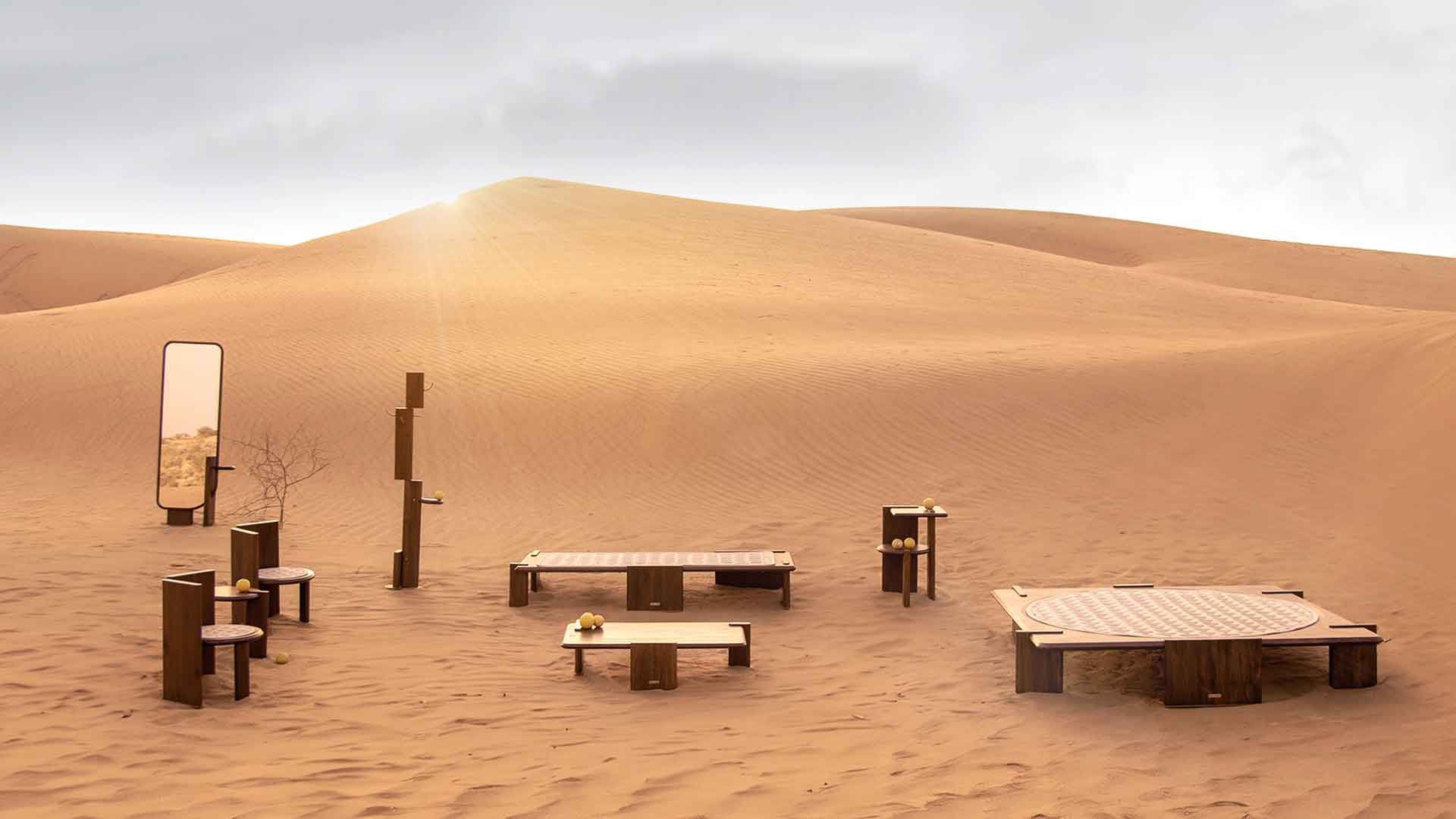
The natural makeup of Dubai’s Creek has been a vital regional hub for East and West trade for centuries. And today it continues to be a nerve centre for the exchange of ideas, and culture, too at the Dubai Design Week, which runs until November 9th. Here global creativity converges with local heritage to shape a city’s evolving identity.
Some Kind of Practice presents ‘When Does a Threshold Become a Courtyard?’
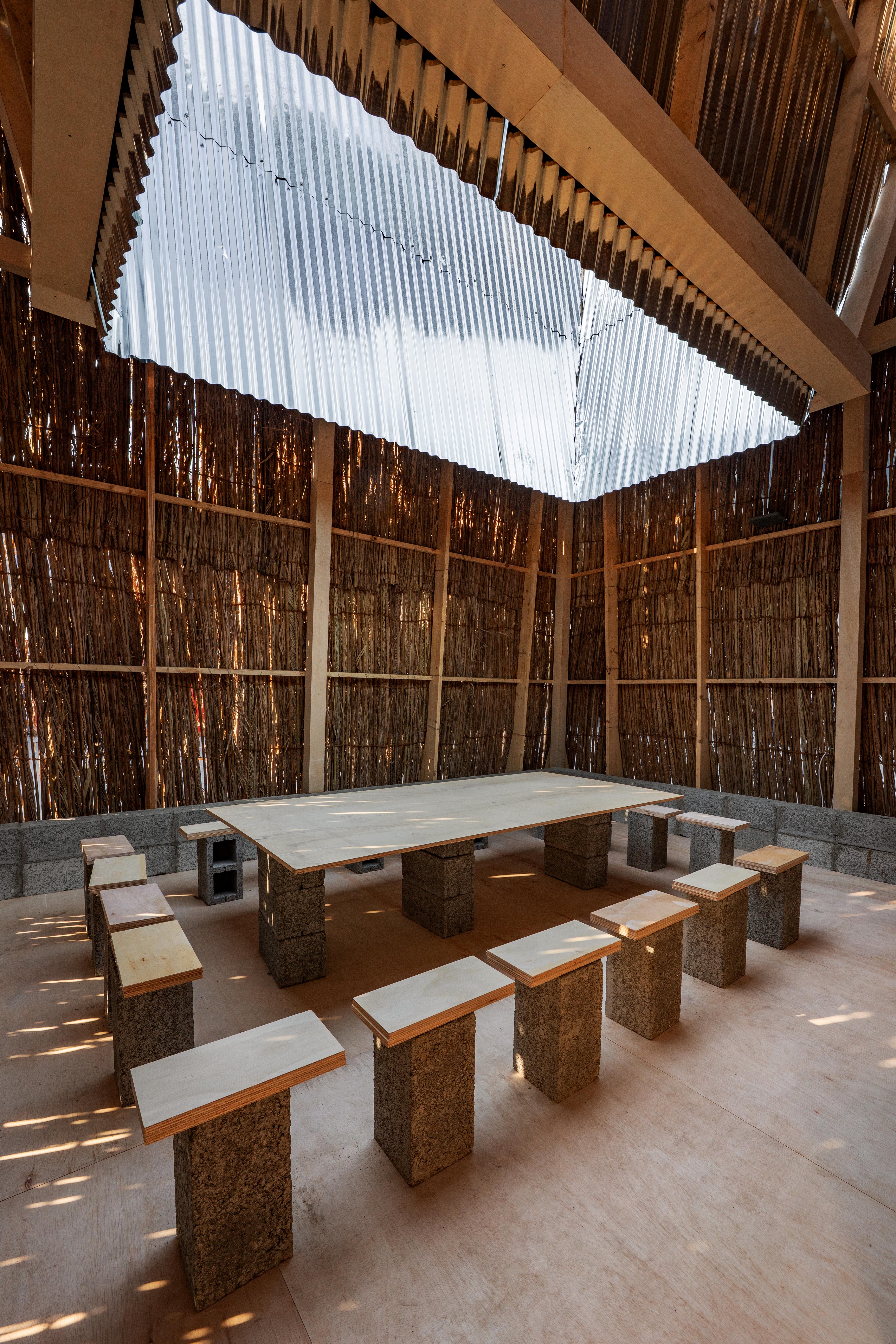
The winning proposal for the 2025 Urban Commissions theme of Courtyard: titled ‘When Does a Threshold Become a Courtyard?’, it was conceived by the UAE-based design and research studio Some Kind of Practice, founded by Omar Darwish and co-led with Abdulla Abbas
How does a city known for hosting the world’s tallest building reconnect with its roots, often hidden behind glass and steel in a growing metropolis? At the Design District, palm fronds enclose a courtyard built on concrete blocks, while corrugated metal sheets form an open roof structure that lets in light and air. This is the winning proposal for the 2025 Urban Commissions theme of Courtyard. ‘When Does a Threshold Become a Courtyard?’, was conceived by the UAE-based design and research studio Some Kind of Practice, founded by Omar Darwish and co-led with Abdulla Abbas.
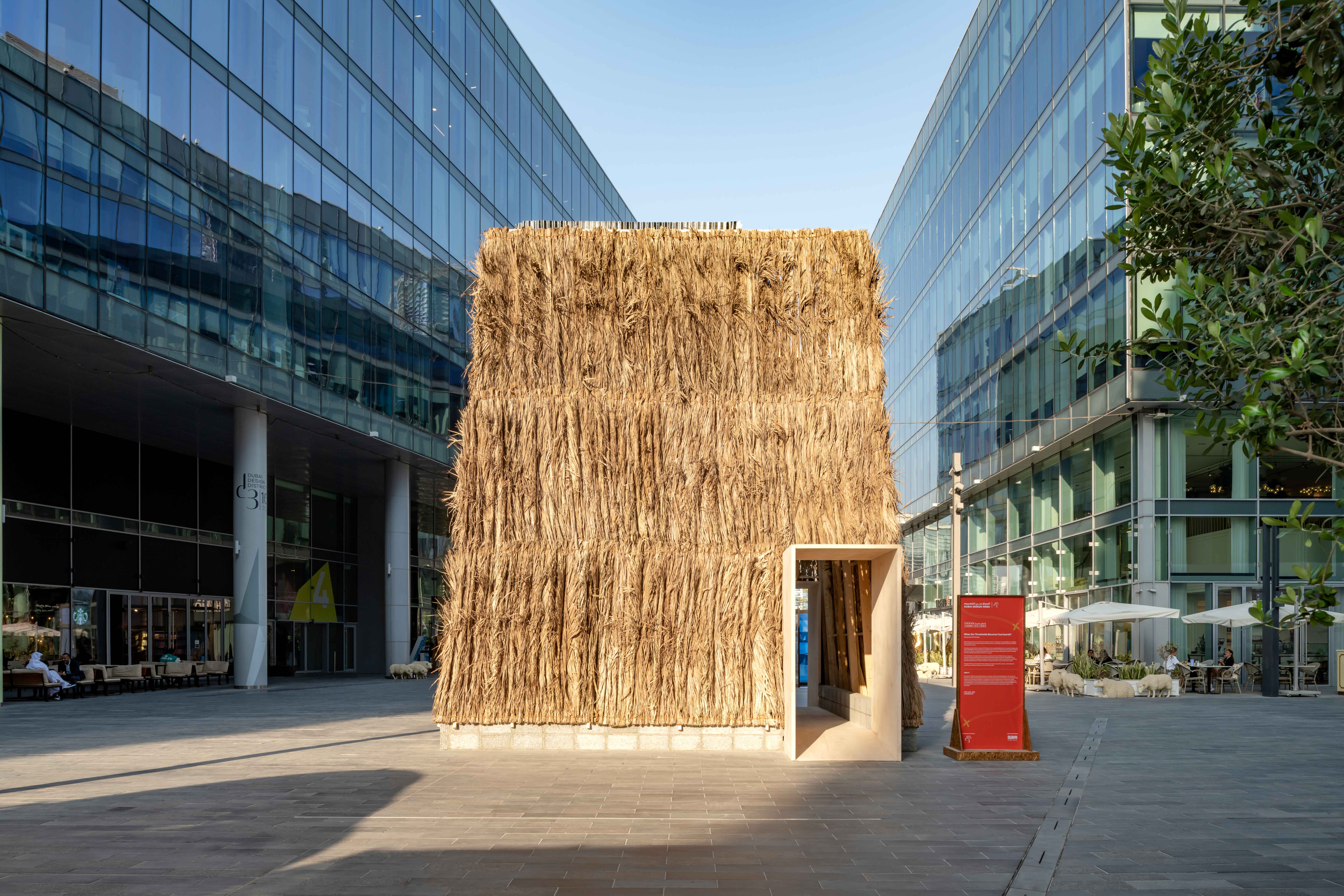
'Our fieldwork focused on places that have so far remained untouched by development; in the mountains, along the coast, and in the desert,' says Darwish. 'We wanted to recreate the regionally important courtyard space using off-the-shelf and natural materials, combined with traditional techniques such as the stacking systems we observed in the desert,' Abbas adds.
Ile Griot pop-up library by Bootleg Griot
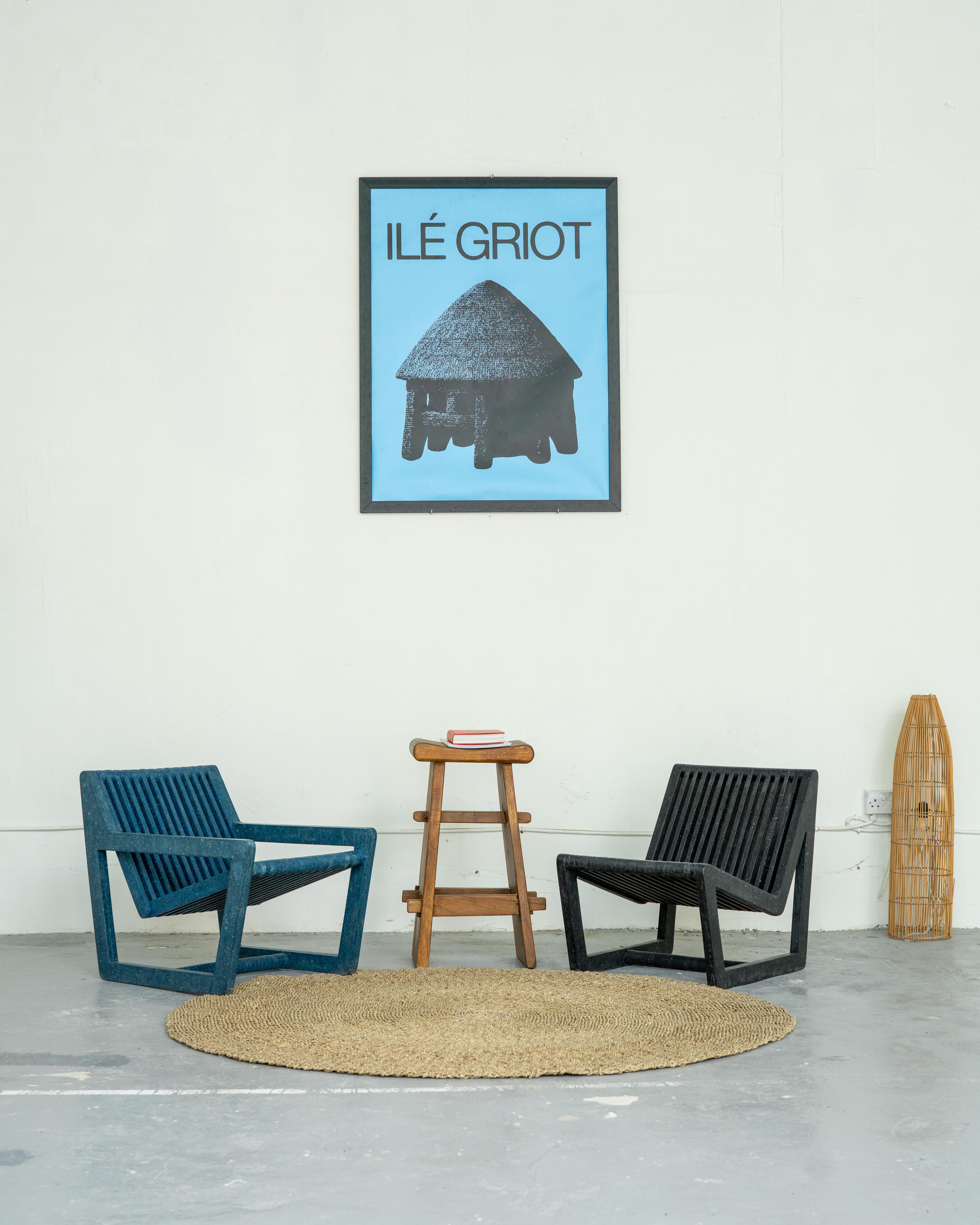
Ile Griot, Bootleg Griot's pop-up library
In Dubai, the native Ghaf tree cannot be felled; its deep roots draw down for nourishment, and it’s common to see structures built around it. Likewise, the city’s expanding creative scene is digging deep to lay a solid foundation that makes space for both local and international talent to take root and grow. Bootleg Griot is one such organisation.
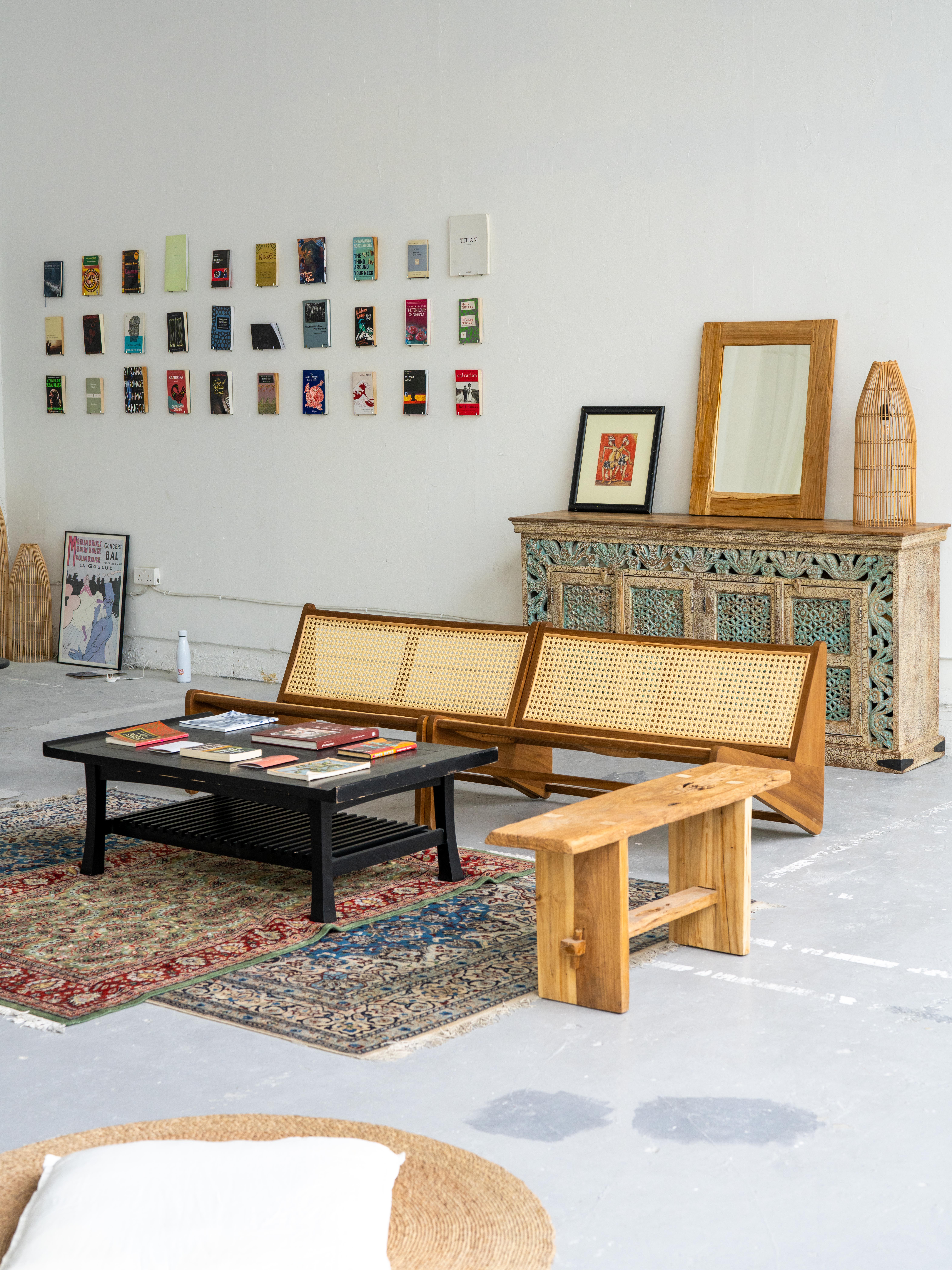
Ile Griot, Bootleg Griot's pop-up library
The pop-up library focused on housing African literature holds a collection of over 3,000 books all sourced from the UAE. ‘West African culture’s concept of the griot was essentially a human library,’ explains Fawaz Abdulazeez, co-founder of Bootleg Griot. ‘They say when a griot dies a library burns down.’
Their Ile Griot (Griot’s home) installation is set up as a space the griot would have lived and invited people to visit, and so they invite visitors to enter this home as they hold storytelling sessions, talks and screenings.
Tanween Design Programme
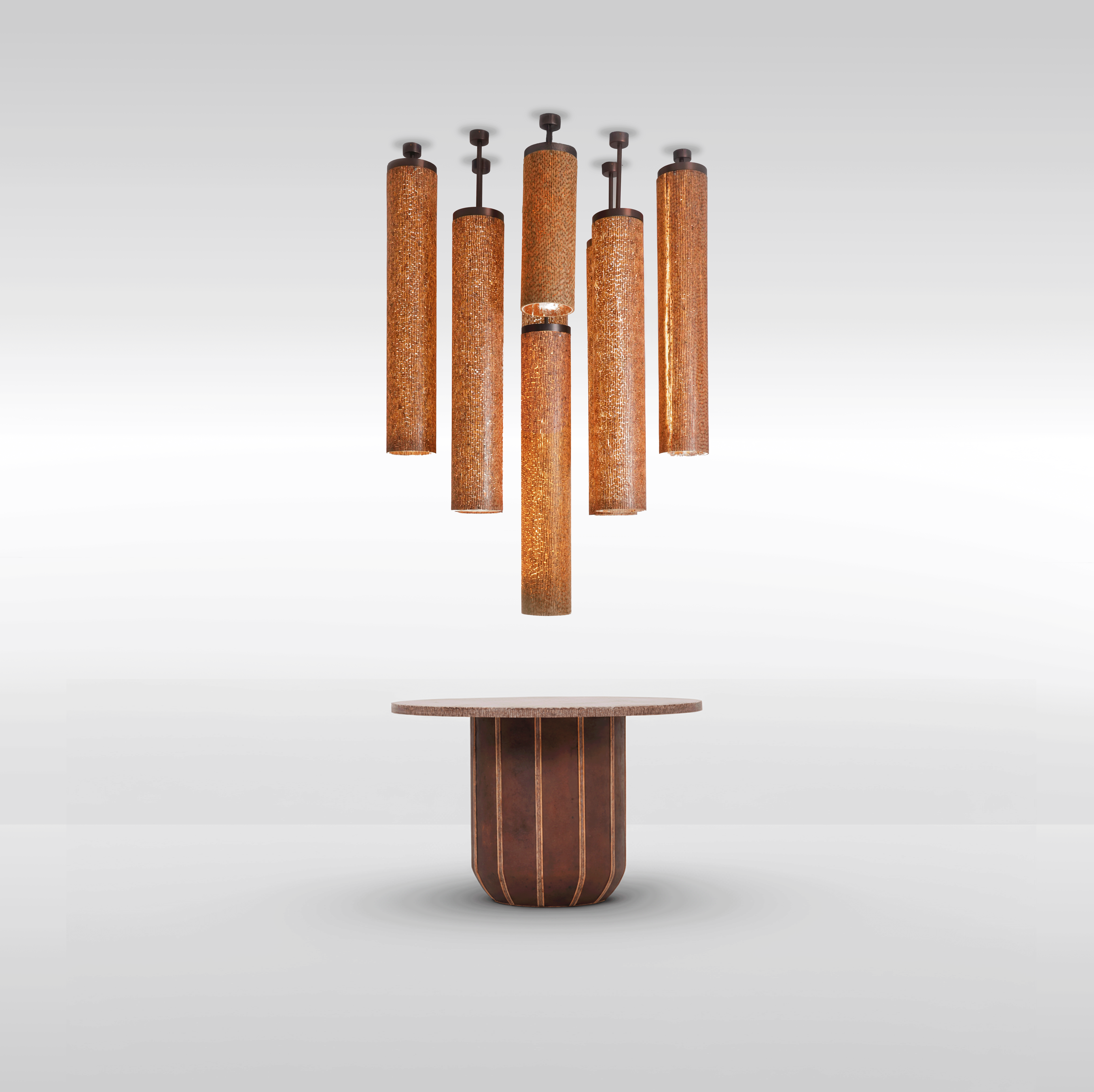
Al Nawa Collection by Nasser Alghawi
Organisations such as Tashkeel are enriching the design scene with their professional development offerings. Members and students are encouraged to experiment while gaining practical knowledge to develop and grow their business and skills.
Receive our daily digest of inspiration, escapism and design stories from around the world direct to your inbox.
At Downtown Design graduates of Tashkeel’s Tanween Design Programme explored the creative potential of local materials typically dismissed or underutilised. For instance, the Al Nawa Collection made from date pit and glue by artist and poet Nasser Alghawi features a chandelier and display table. Both made from date pits and wood dust. By transforming discarded materials into design objects, Alghawi presents an ode to Emirati generosity and resilience.
Clock & Cloud studio’s ‘Loodo’ table takes a more playful, yet practical approach. The piece features legs made from a desert sand based bio-composite crystal glass and with henna, turmeric and charcoal also feature. Reem Shawkat explains It’s incredible that construction companies pay to discard sand. ‘The material is often overlooked, even though we have it in abundance,’ Alefiyah Ustad says. The duo met during the Tanween course.
Emerging designers
A post shared by Adnan Arif (@adnanmakes)
A photo posted by on
Athath Fellowship participant Adnan Arif’s translates modularity with ‘Sil’, a totem-leg inspired table that allows for more elements to be in the future. 'I often feel furniture is too static, so I wanted to make it more accessible through personalisation and the use of different shades that allow it to look richer.'
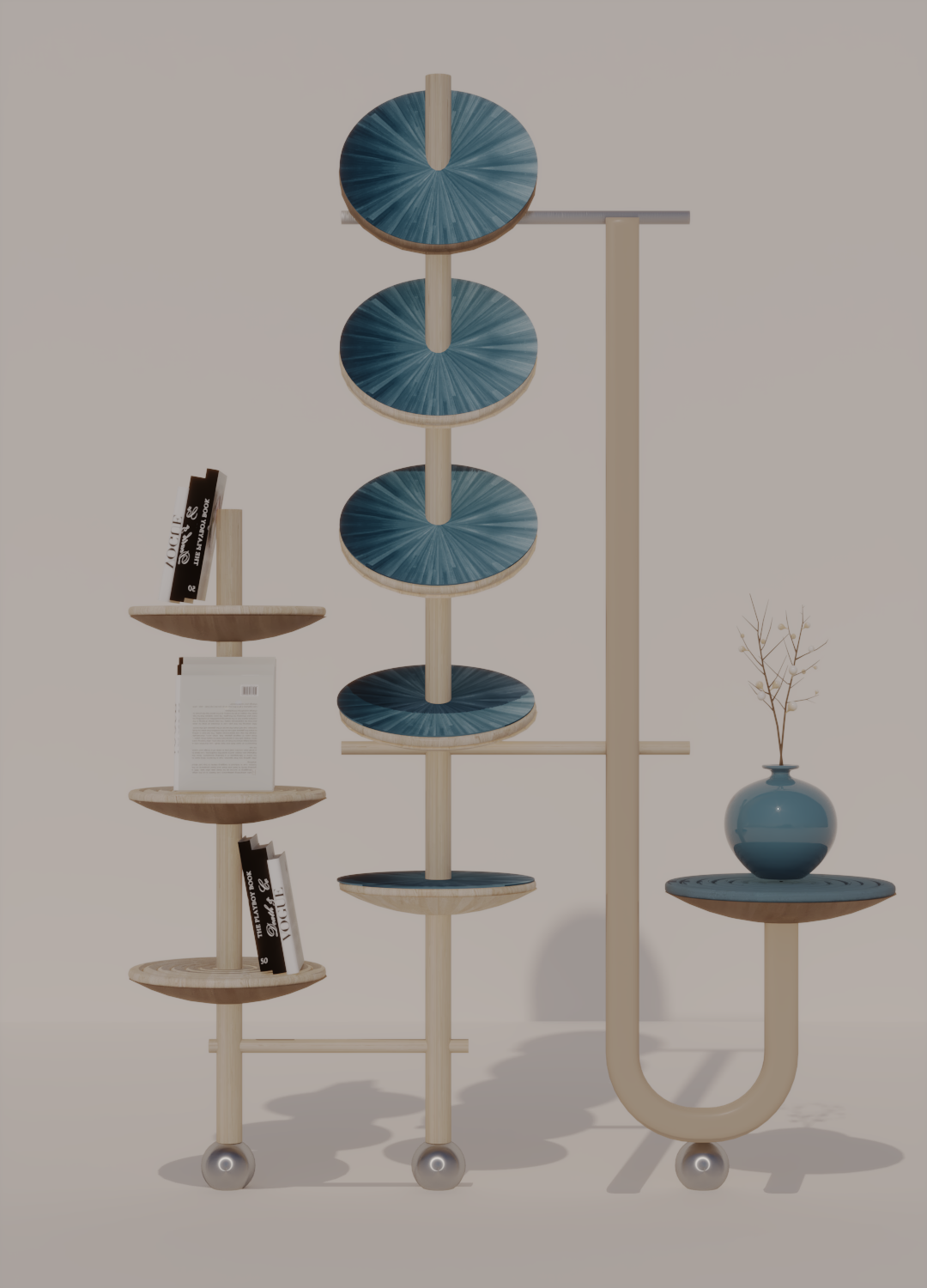
One Third Studio’s Wasl shelving system
Dubai’s position as a regional hub inspired One Third Studio’s Wasl shelving system, presented at The UAE Designer Exhibition. The design integrates circular platforms inlaid with intricate Dubai Khoo marquetry, blending modern form with traditional craftsmanship.
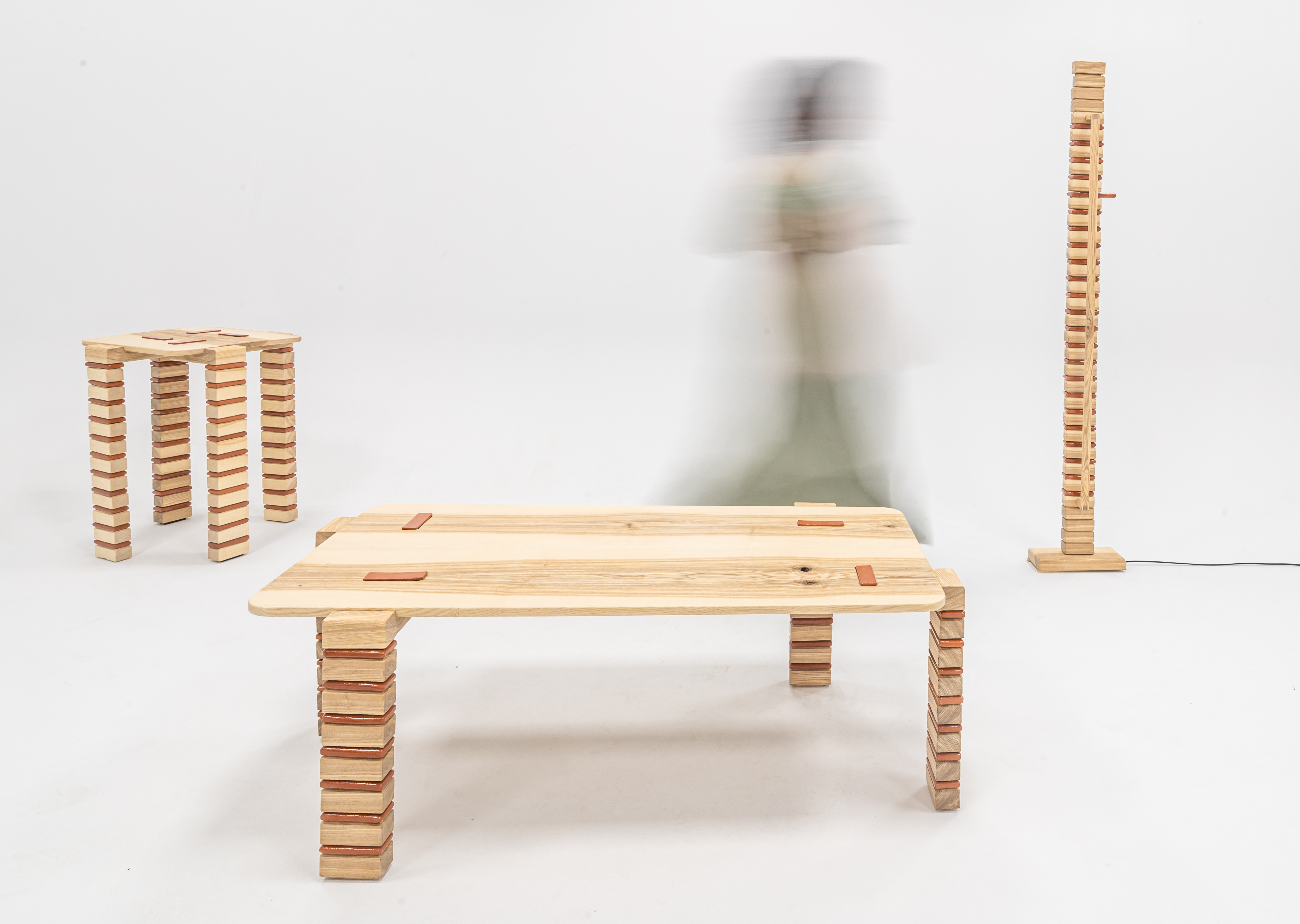
Millefeuille collection by Design And
Product designer and founder of Design And Nourhan Rahhal is a skilled woodworker. Her Millefeuille collection features a tall lamp she made using layers of terracotta and ash wood stacked on top of each other. For her table made using the same materials she explains, “I haven’t used fixings here, and have connected the elements using mortise and tenant joints which offer stability and beauty.”

Morphcode Collection by Ahmad Kattan
The Morphcode Collection by Syrian designer Ahmad Kattan are as functional as they are sculptural, the stools or side tables are made of simple geometric shapes rotated on a 45-degree angle. Made using a CNC machine, the solid yellow pine pieces 'demonstrate that wood can still work in humid environments,' Kattan explains.

Hardik Gandhi’s Around Collection
Hardik Gandhi’s Around Collection considers multigeneration scaling his boucle chairs for adults and children, while his Avora planter, made from aluminium is designed for both indoor and outdoor use with a powder-coated colour finish allowing for personalisation.
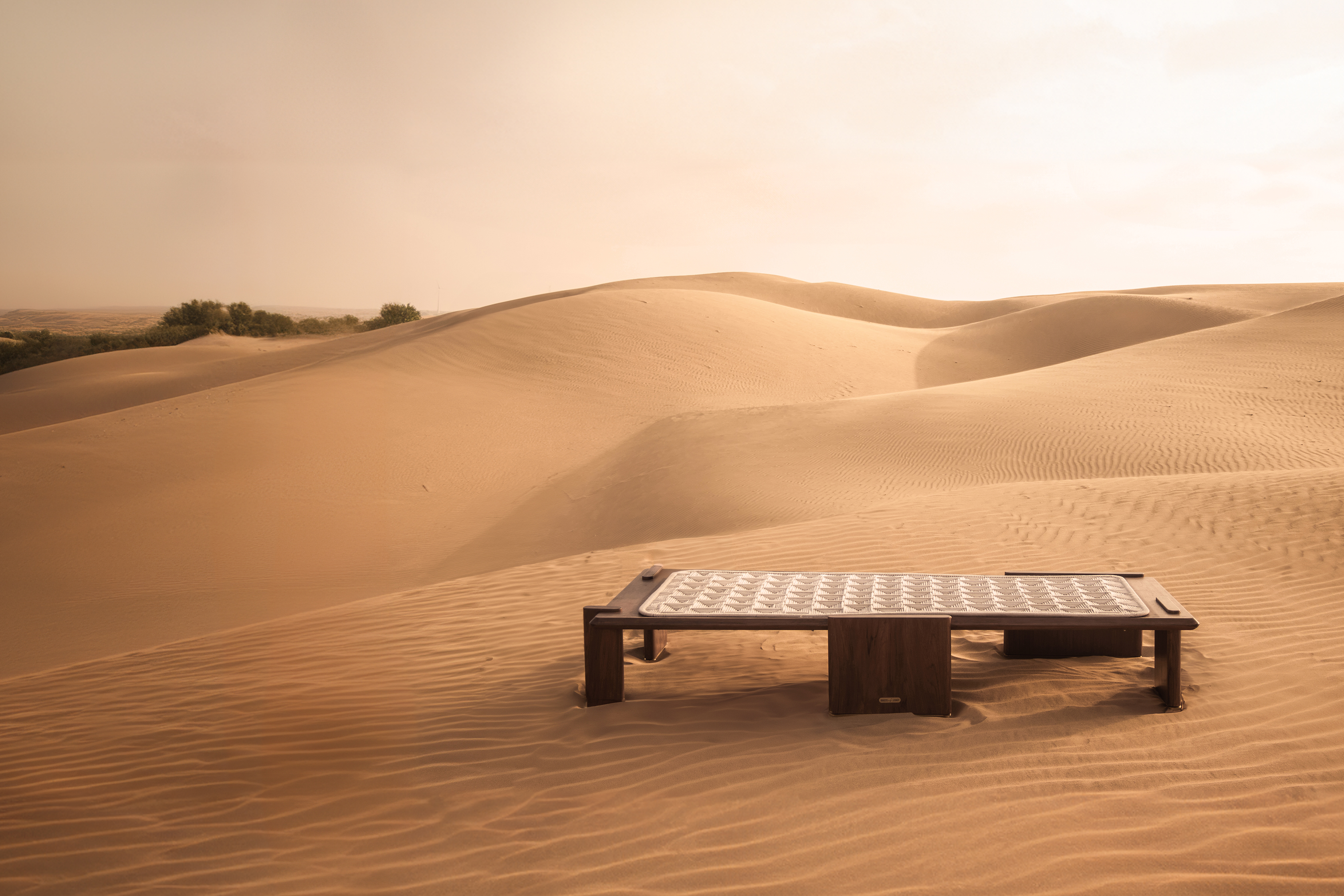
Jagdish Sutar's Objects of Legacy
Jagdish Sutar, a Milan NABA graduate, presented Objects of Legacy, which triggers memories of Rajasthan where all the pieces have been made. “These are the things I saw while growing up,” he says of the ‘Family Daybed’ made from teak, the oversized furniture reimagines the Indian ‘Charpoy daybed’ while encouraging people to gather close together.
Dubai's Downtown Design District: d3 Awards and more
A first for this year’s edition at the Design District is the d3 Awards, which champions emerging talent from the MENA region. Ohireme Uanzekin took home the prize for his Abora project that responds to the rapid urban development that has affected the natural terrain with the reintroduction of natural formations like trails and adaptive structures to create a living terrain shaped by soil, sediment and settlement.
Meanwhile, established Italian brands like Venini revisited archival design with an elaborate ceiling installation, and Foglie D’oro showcased masterful wood craftsmanship and the poetic simplicity of the Andrea Bonini-designed Sahrai booth.

Doodle and the Gang and Hand 'Postcards' collection
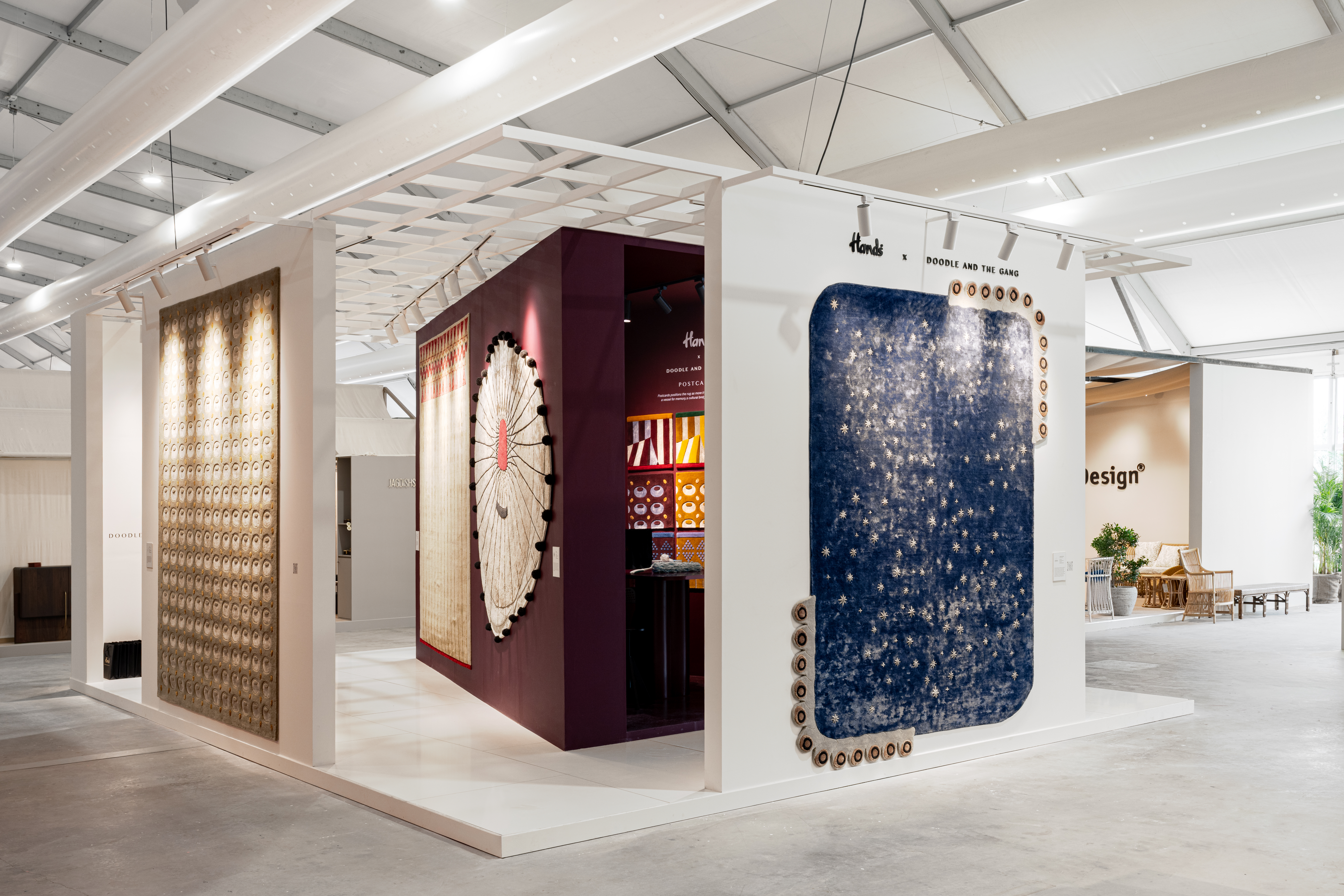
Doodle and the Gang and Hand 'Postcards' collection
Also at Downtown Design, Doodle and the Gang’s collaboration with rug company Hands and their ‘Postcards’ collection is a playful tribute to the collective memories of the Egyptian sibling design duo’s Asmaa and Mentalla Said’s heritage and travels. Pieces like ‘Twirl’ take inspiration from the Sufi costume worn by the spinning Al Tannoura dancers of Cairo and ‘Bonjuseh’ celebrates the iconic regional drink Bonjus. ‘These are not just our memories, a lot of these icons are recognisable throughout the region like the Aroosa Tea,’ Mentalla says. ‘We wanted the memory to use this project to create a storytelling of the regional memory that could trigger a nostalgic sense of comfort.’
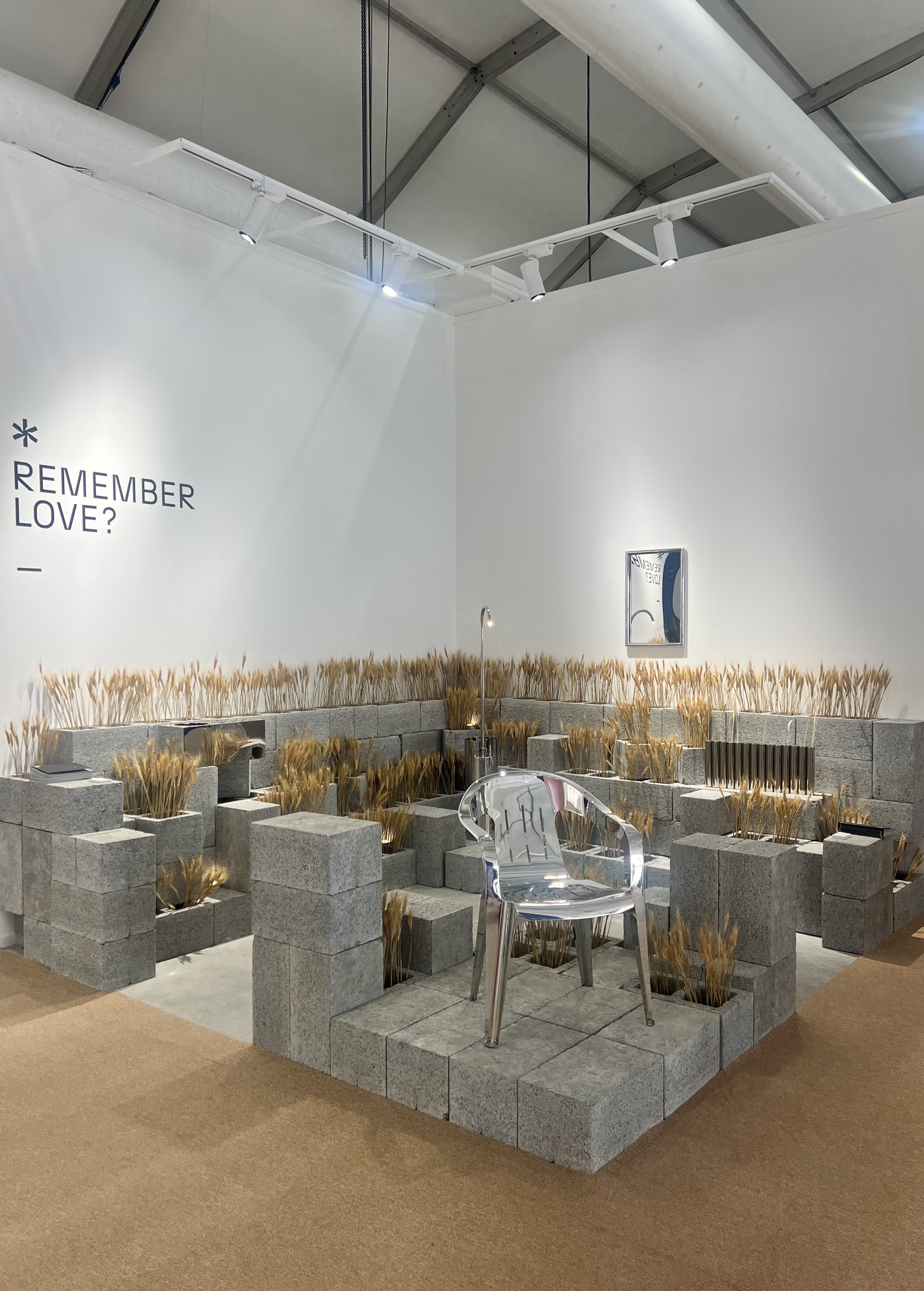
‘Remember Love?’ by Badih Ghanem Architecture and Design
Badih Ghanem Architecture and Design is also asking visitors to look back and ‘Remember Love?’. The French-Lebanese architect exhibits five pieces made from polished steel that recall family celebrations in the form of a ubiquitous chair that would always be dragged out for festivities. The vases, inspired by the Beirut Port Silos that scattered wheat throughout the city after the explosion of 2022 or the cinder blocks that represent the numerous unfinished post war homes. 'It’s about taking the time to live with what happened to us, we are scarred and live with it.' The mirror is made from one piece that folds on itself to create a frame, it initially appears distorted and as you move closer things appear clearer, a bit like our memories.'
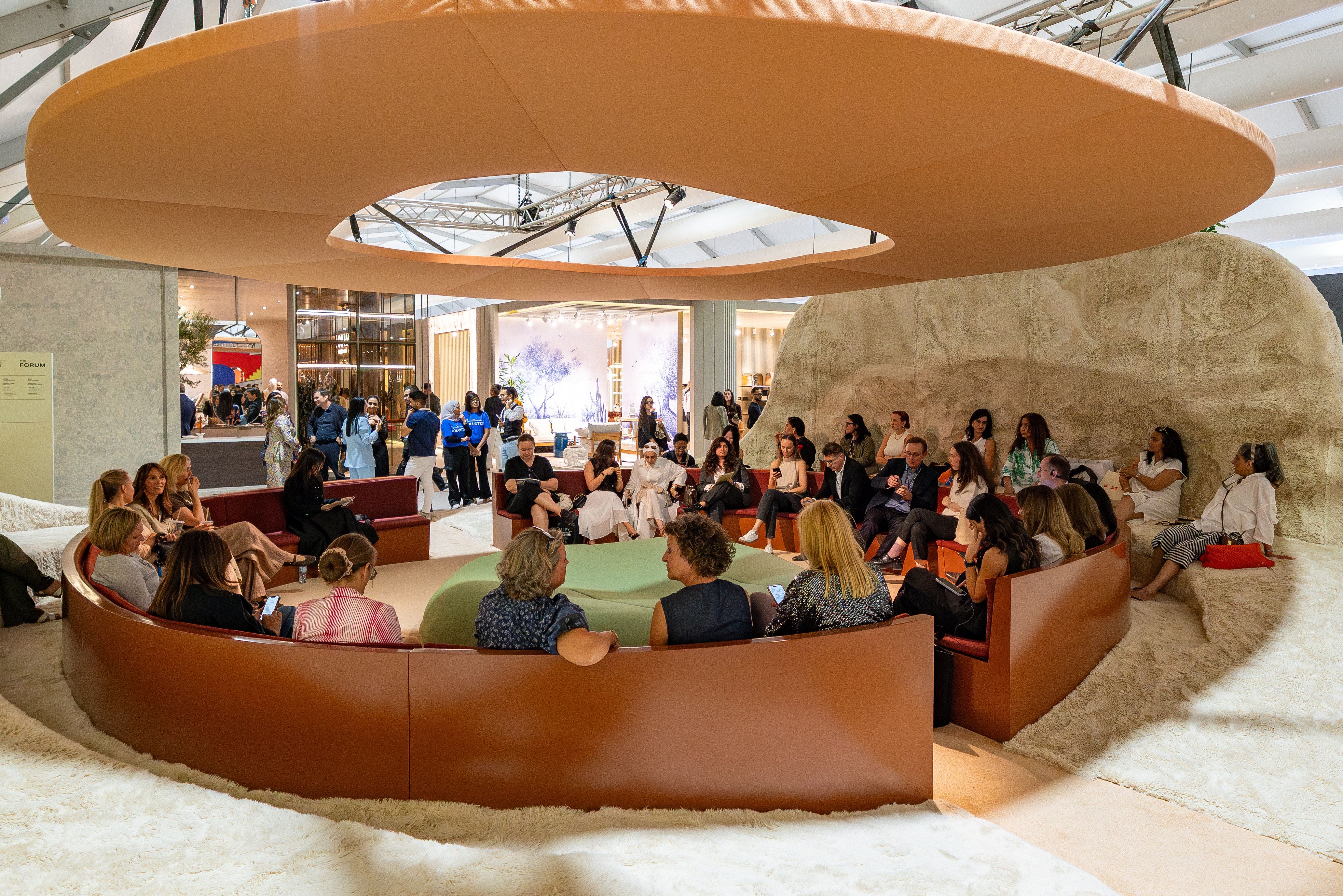
As the event proceeds, Dubai Design Week director Natasha Carella is noticing that risks pay off. The design for the forum space used for the talks was conceived by Lebanese architect and designer Roula Salamoun and it has been positively disruptive. 'We wanted to flip things completely this year and Roula really committed to that,' Carella explains.
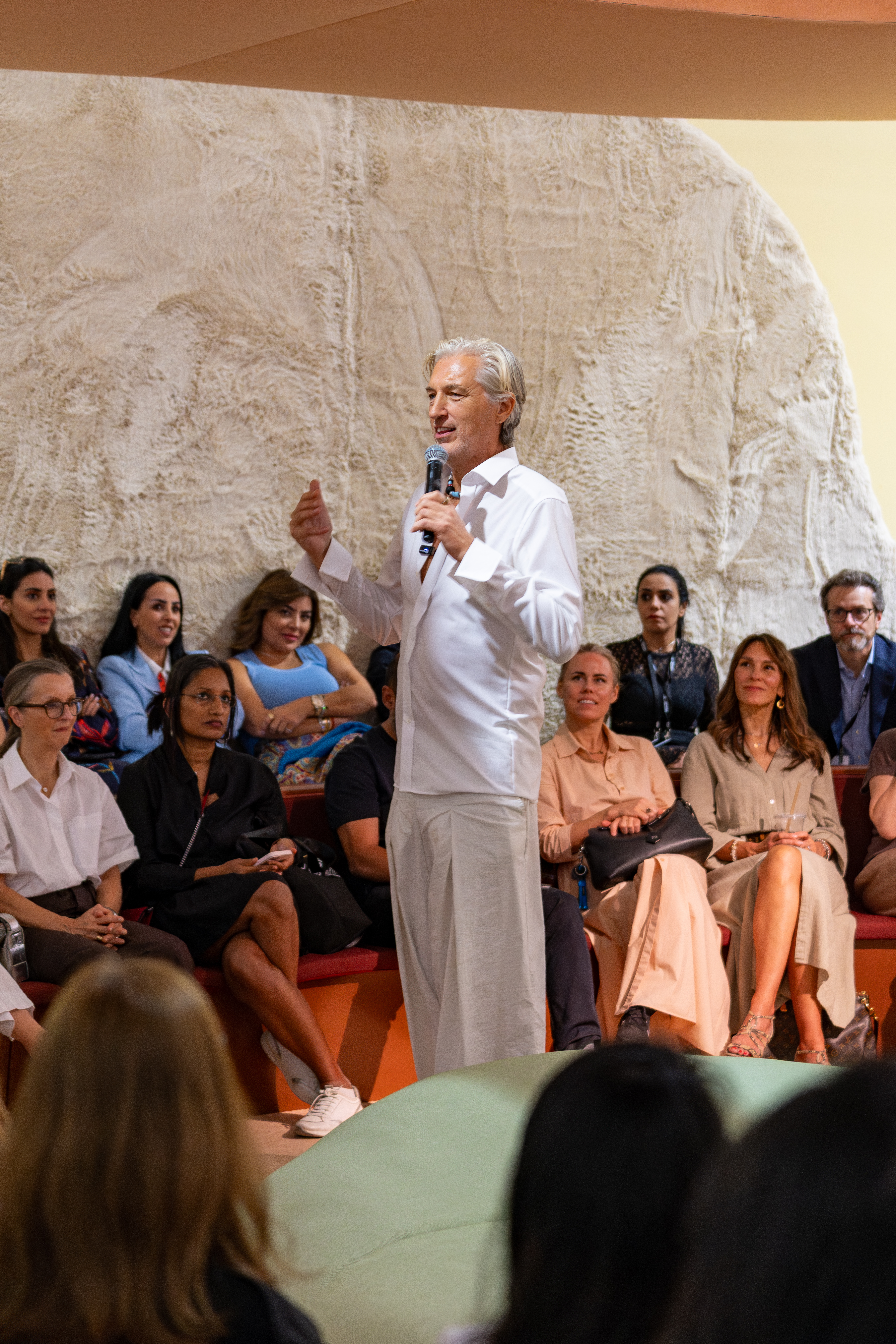
'You see the renders but before the event you don’t realise how the audience will react and interact with the space. Initially speakers like Tom Dixon sat down, but at the next talk Marcel Wanders walked around the space. There was also a lady who took off her shoes and sat comfortably to listen to a few talks and that’s exactly how we want the space to function.'
-
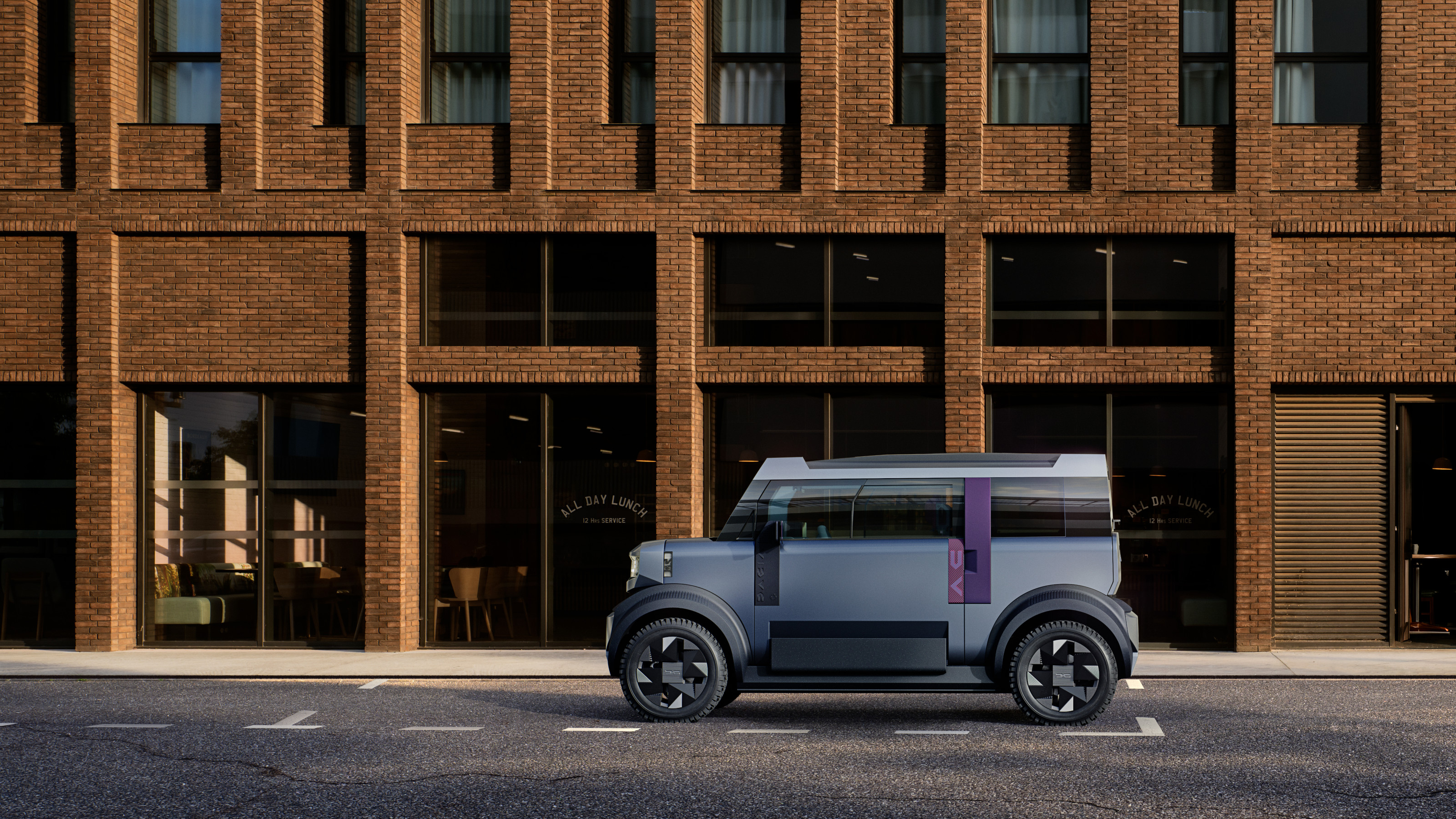 Year in review: the shape of mobility to come in our list of the top 10 concept cars of 2025
Year in review: the shape of mobility to come in our list of the top 10 concept cars of 2025Concept cars remain hugely popular ways to stoke interest in innovation and future forms. Here are our ten best conceptual visions from 2025
-
 These Guadalajara architects mix modernism with traditional local materials and craft
These Guadalajara architects mix modernism with traditional local materials and craftGuadalajara architects Laura Barba and Luis Aurelio of Barbapiña Arquitectos design drawing on the past to imagine the future
-
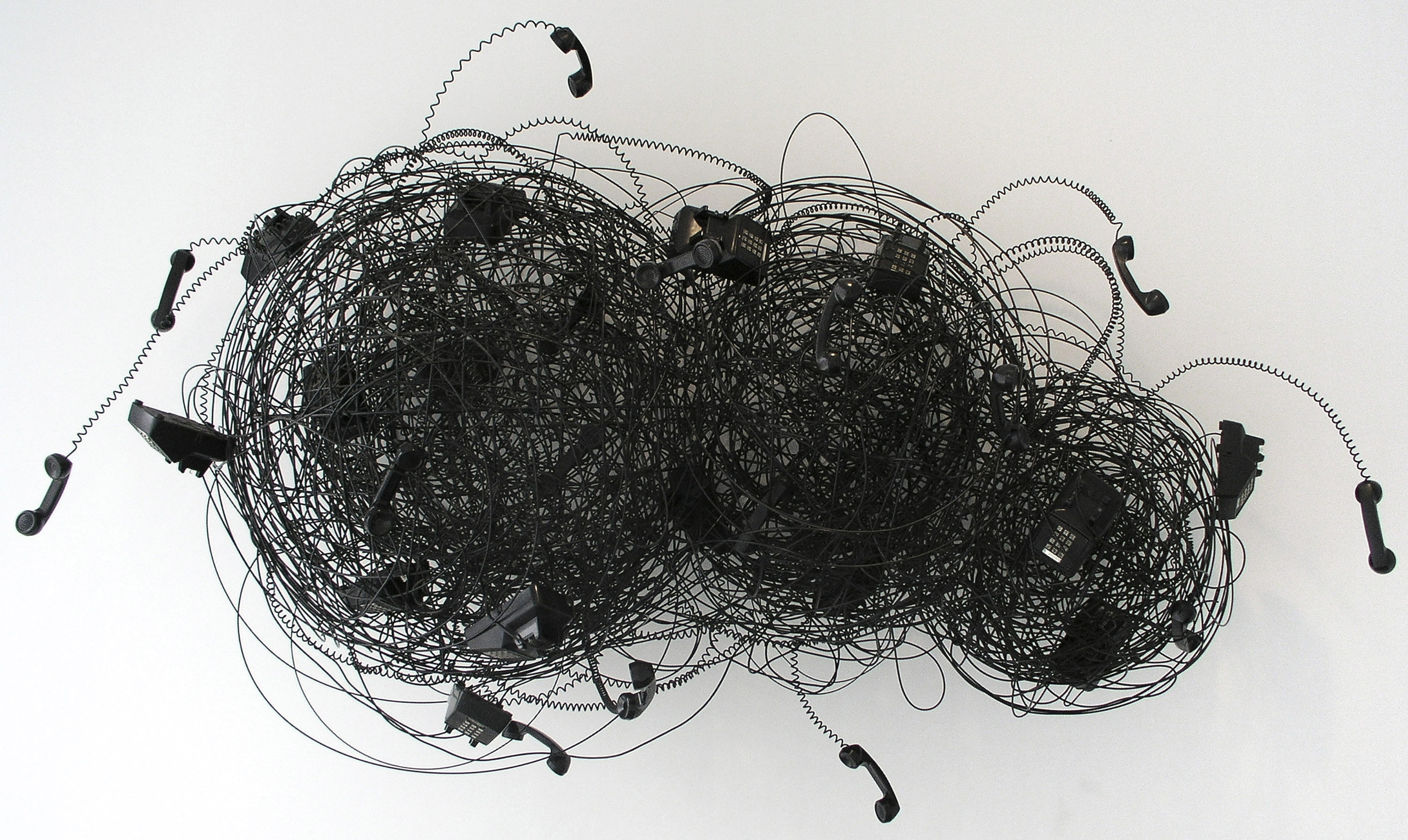 Robert Therrien's largest-ever museum show in Los Angeles is enduringly appealing
Robert Therrien's largest-ever museum show in Los Angeles is enduringly appealing'This is a Story' at The Broad unites 120 of Robert Therrien's sculptures, paintings and works on paper
-
 Design Miami announces Dubai collectible design platform in collaboration with Alserkal
Design Miami announces Dubai collectible design platform in collaboration with AlserkalThe new platform will honour the region’s cultural heritage while highlighting its spirit of innovation
-
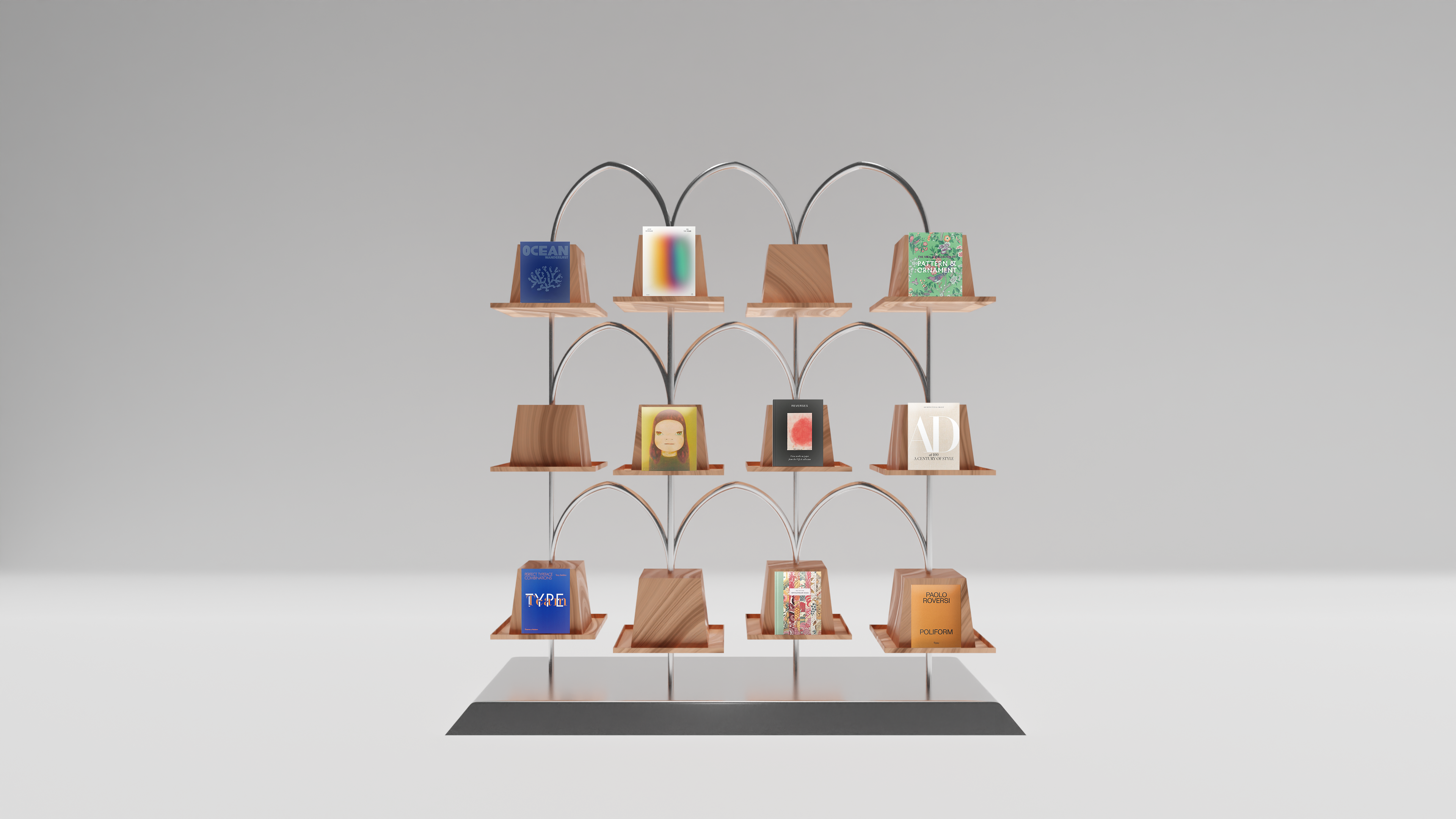 Postcard from Dubai Design Week 2024: the highlights
Postcard from Dubai Design Week 2024: the highlightsDubai Design Week, the largest design fair in the Middle East, showcased more than 1,000 acclaimed and emerging designers, brands and creative leaders. Here are our highlights
-
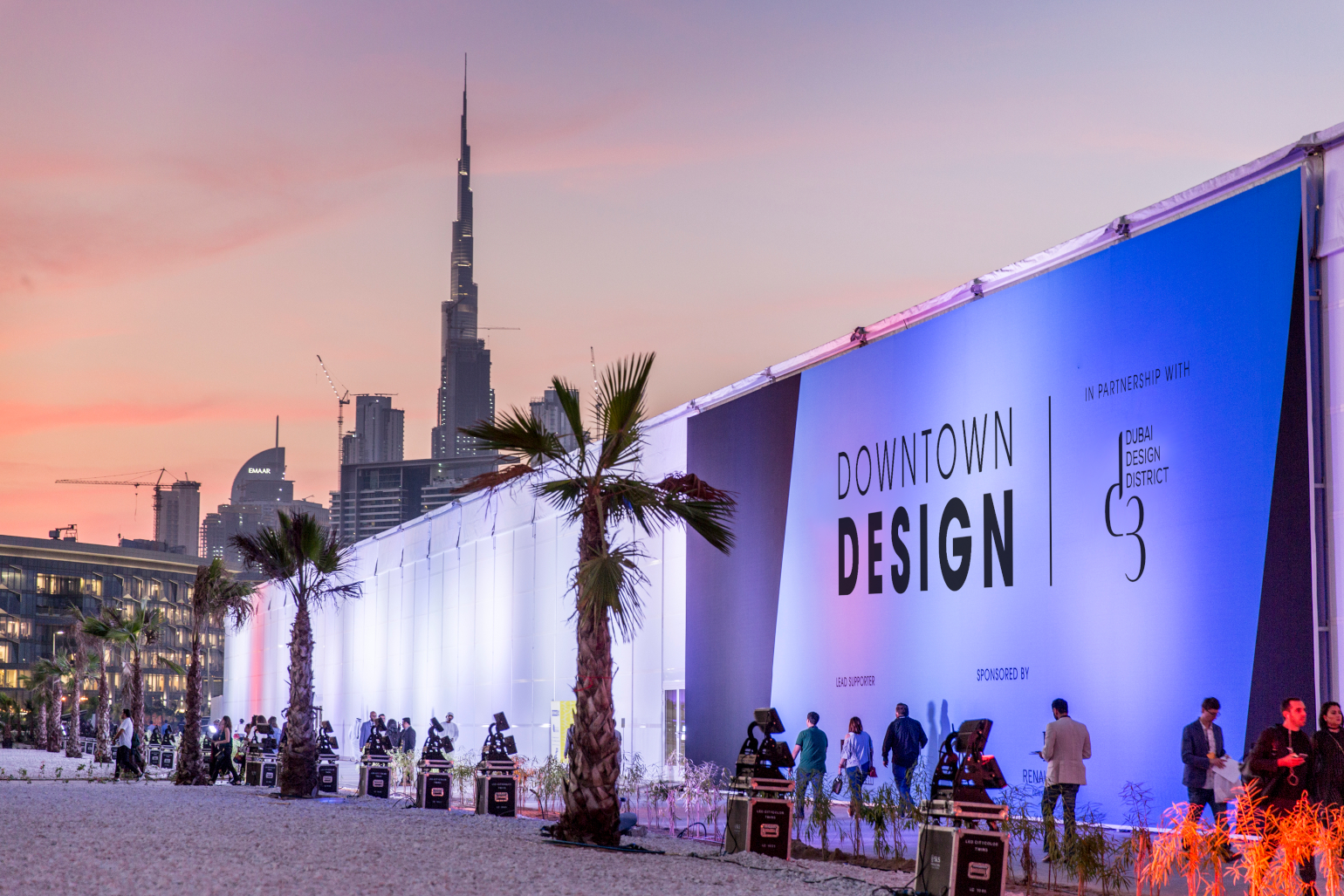 Downtown Design 2022 set to bolster Dubai’s booming design scene
Downtown Design 2022 set to bolster Dubai’s booming design sceneThe Middle East’s leading design fair, Downtown Design returns 9 – 12 November 2022, presenting opportunities for the world’s design industry in the UAE’s booming market In partnership with Downtown Design
-
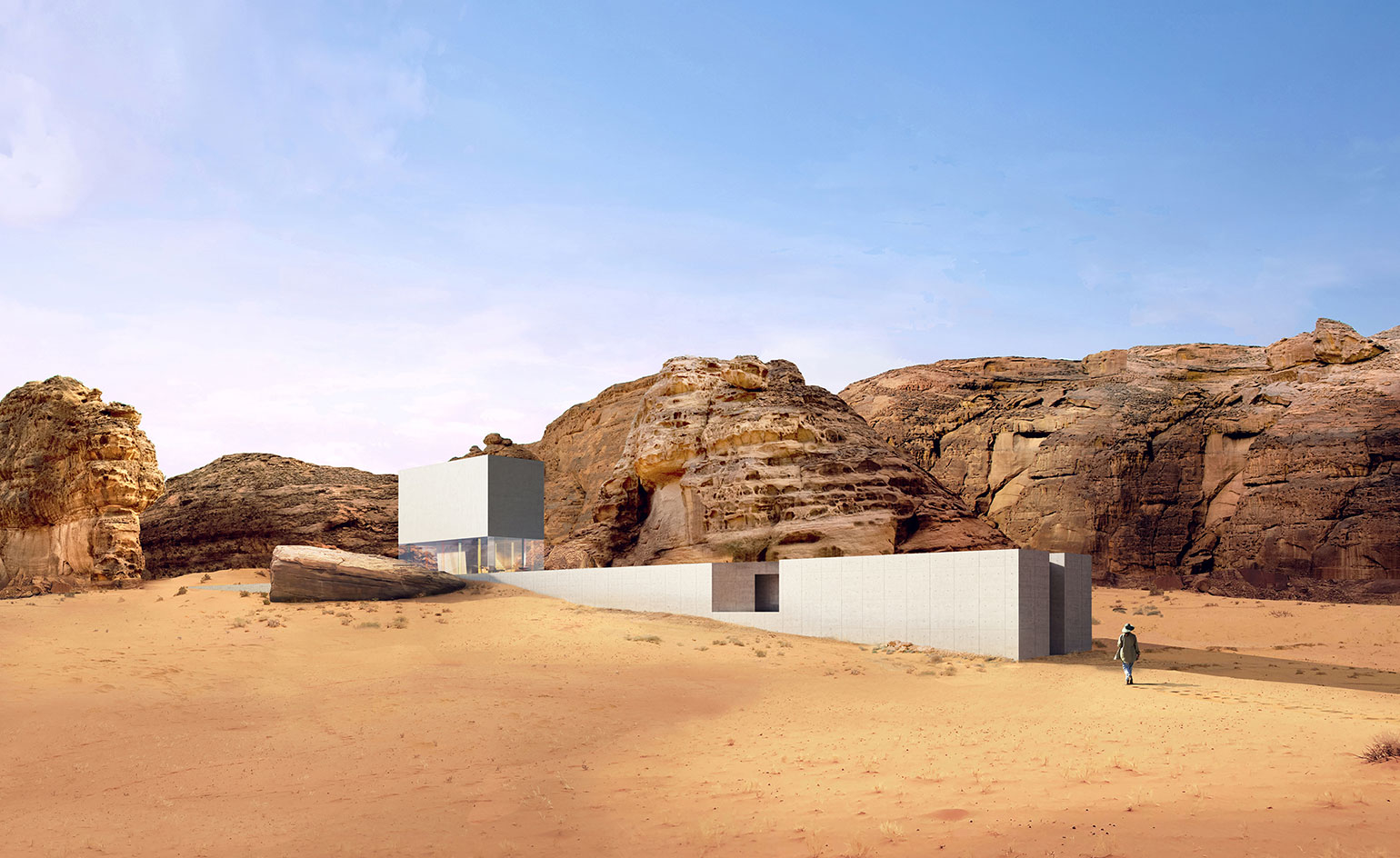 Dubai Design Week 2021 champions local creativity and visions of the future
Dubai Design Week 2021 champions local creativity and visions of the futureDubai Design Week 2021 highlights – here’s our pick of where to go and what to see (8 –13 November 2021)
-
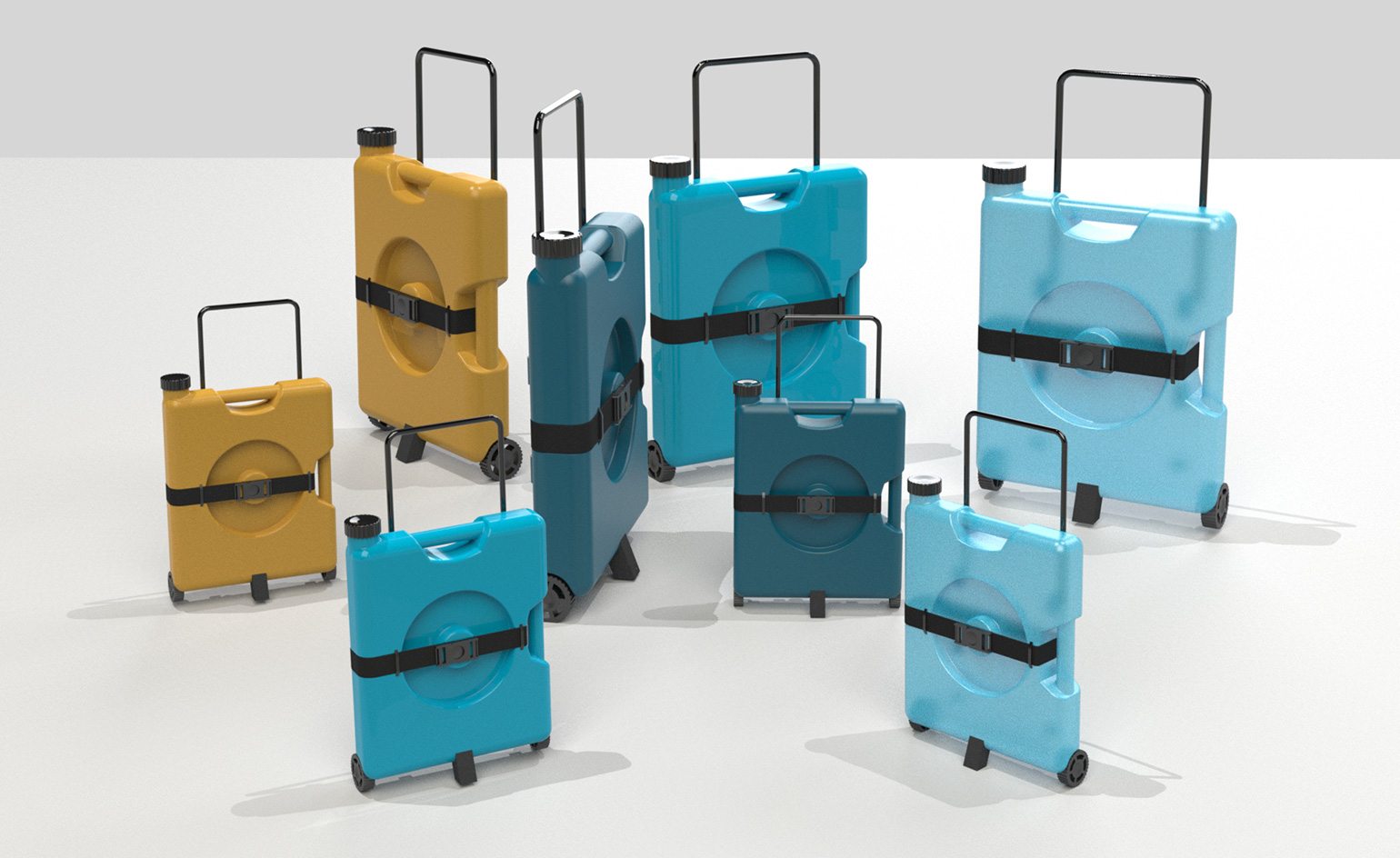 Global Grad Show 2020 takes innovation to the next level
Global Grad Show 2020 takes innovation to the next levelFrom a fall prevention device for elderly Parkinson's disease patients to a navigation system made of silk protein, this year’s works address our globe’s complex issues
-
 Hozan Zangana's socially-distant seating is inspired by mirages
Hozan Zangana's socially-distant seating is inspired by miragesIn Dubai, the Iraqi designer explores a design based on the Fata Morgana phenomenon, creating public seating that invites people to connect from a safe distance
-
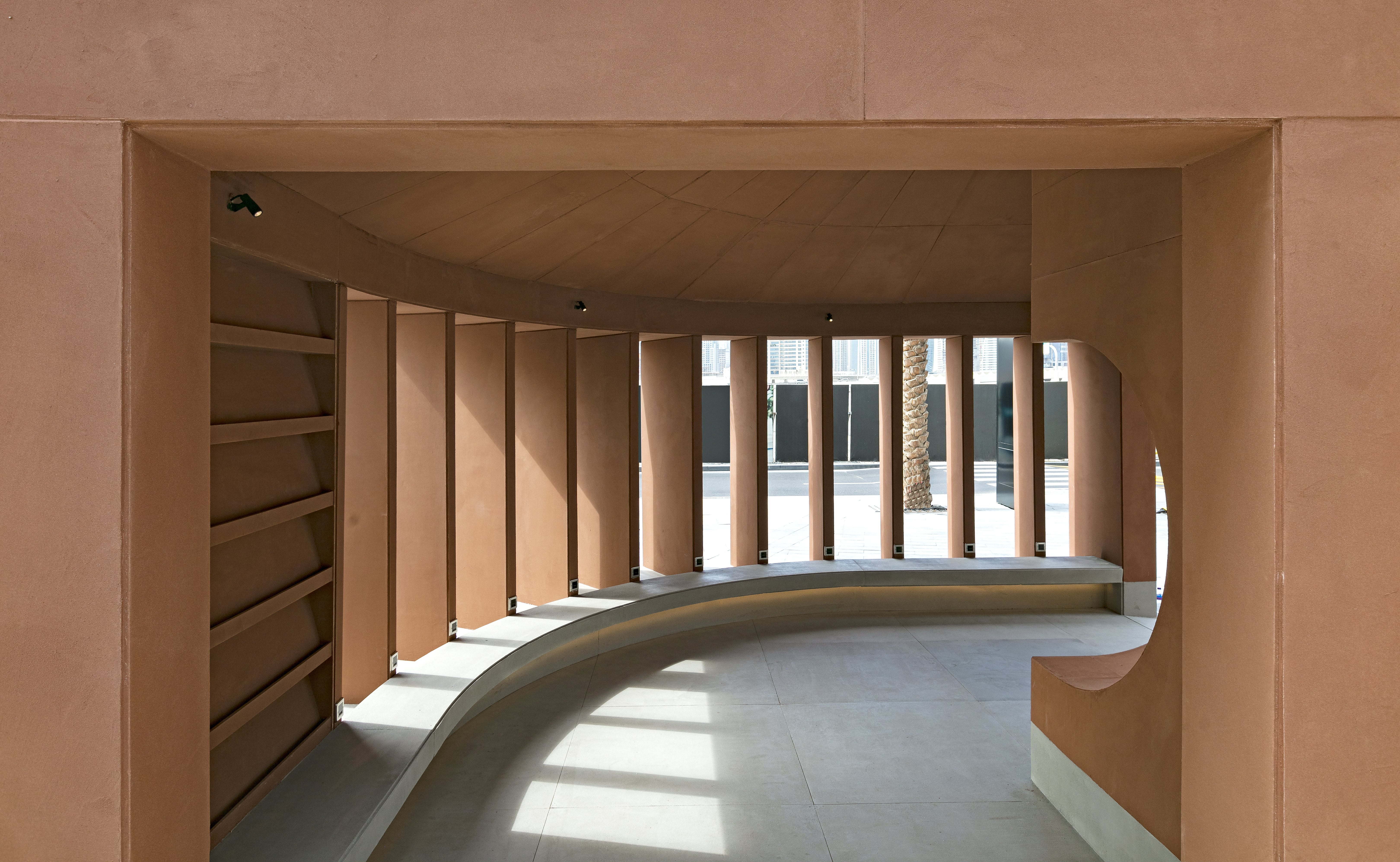 UAE’s thriving creative scene catapults Dubai Design Week onto a global stage
UAE’s thriving creative scene catapults Dubai Design Week onto a global stage -
 Creative dispatches: highlights from Dubai Design Week 2017
Creative dispatches: highlights from Dubai Design Week 2017